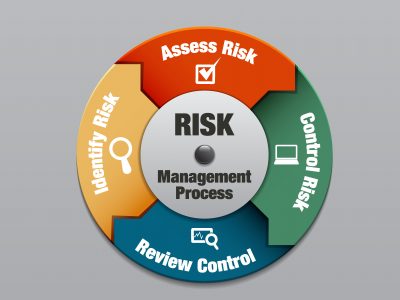What exactly is biodiversity?
The biodiversity not only includes the species we deem as rare, threatened, or endangered but instead includes every living organism – from organisms we barely can see or identify with our naked eyes, such as the microbes, protozoans, fungi, insects to human and higher animals.
The advent of awareness includes the usage of the term “biocultural”, which is used to describe the dynamic, interconnected nature and ceaseless improvement demonstrated by the people and places. This further includes the articulation of humans and the diversity of human cultural diversity as a pivotal part of biodiversity.
Furthermore, these concepts also integrate the human use, knowledge, beliefs, and influence of the human communities and its concurrent effect on biodiversity.
What poses a threat to biodiversity?
For ages, the biodiversity has been intact and all things were in a state of dynamic equilibrium and stability, until recent centuries, where the humans started to overpower the other fellow organisms, which paved the way to the rapid changes in the ecosystem with a concurrent loss of biodiversity across the globe. This has been attributed to the time which most people call the “Anthropocene”.
The major and most evident direct threats to global biodiversity primarily include loss of habitat, fragmentation, unsustainable resource allocation and usage, pollution levels, and big-time paradigm shift in the global climate. And all these losses of biodiversity can be drawn back to the skyrocketing in the human race followed by overconsumption of resources which form the backbone of all these problems (1).
But realizing the bitter truth and acting considerably against the same, may revert and reinstate the original biodiversity, but it can still control the damage to carve the best outcomes in case of biodiversity.
The most pertinent question that one usually asks in these circumstances is “What is so important about these Biodiversity and Ecosystem Services?”. We usually turn a blind eye to the services the ecosystem delivers to all of us, maybe we are just scratching the surface, as we quantify the value of these services. These may, however, include the climate regulation, production of biomass, cycling, and recycling of nutrients and capture of carbon, and regulation of carbon footprints. These however we may deem unnecessary, would still be pretty conspicuous as even one’s basic needs for sustenance, like food, water, air, and climate directly or indirectly are strongly influenced by the biodiversity.
Maybe it’s that time to punch in another question, “How important is this? Is this important or is it just hyped up?”. The magnitude of importance of the same can be pretty much understood by citing an example:
The wide varieties of plants and food crops that we find in the markets, which finally may make it to the plates, are pollinated by numerous ways, of which many include rodents, insects, air, and even water.
The water which quenches our thirst post a long hour of workout is filtered and retained by the soil and the edaphic microbiome.
The multivitamin pharma which forms the basis of the billion-dollar healthcare industry charges exorbitantly for the multivitamin pills owing to the synthesis of these supplements. These are provided free of cost by a cascade of biological cycles primarily attributed to the plant, animal, and microbial species. And this list goes on and on and on to infinity.
What is the risk that follows the biodiversity loss?
The above stated is a million-dollar question, which is the most pertinent of all the questions. While most people attribute the loss of biodiversity to the loss of habitat of polar animals, the destruction of the rain forests, and maybe the increase in the level of seawater.
But the deeper meaning of why the loss of biodiversity would affect the human race more than any of the animals, or all the animals taken together would be answered in the following paragraphs.
The financing of clients with the economic activities which are directly or indirectly dependent on the biodiversity and consequently, also on the loss of biodiversity. The banks and the commercial sector would also be left more susceptible to direct and indirect risks, which may be attributed to the loss of biodiversity.
This may also pave the way for new regulations and an amendment in the existing policies of the government, making it more stringent towards the conservation and protection of the existing biodiversity and/or to make the entire financial system and, in particular, the industrial sectors to grow a more resilient biodiversity outcome plan. On the contrary, the businesses may also be held liable for the loss of biodiversity which has occurred as a successor to an inadvertent and unexpected turn of events and/or mishaps, including, the oil spills in the deep seas, the deep crust excavation causing disruptions in the Earth’s tectonic plates.
Additionally, there may be some added benefits and support to the financial institutions and other production sectors, who are successful in developing a very sustainable and environment-friendly business and propagation plan, especially when it comes to activities beyond the scope of the Corporate Social Responsibility (CSR).
However, these risks may also bear with them a great loss, which will be the loss of business opportunities which may in the future have a negative impact on the environment and the biodiversity as a whole. This may additionally be attributed to a loss of business opportunities for startups, a loss of working force for existing companies, a loss in the profit marked-up after the purchase of sales and/or services by the customers. Another risk is that of the loss of reputation, which may deem the company or the top-level executives of the latter to be incompetent and complacent, in adhering to the regulations of preventing the loss of biodiversity (2).
The raised awareness that is brought about by the various government campaigns and the socio-economic groups altogether may also hold up another great challenge. This is the major challenge of the big time paradigm shift in the needs and preferences of the consumers from their regular products to a more bio-compatible and more bio-friendly one, which would pose a bigger threat to the pre-existing products, and may either have to be laid off and permanently shifted to a more bio-friendly alternative to remain in the show. But on the brighter side, these may also help in the penetration of newer and greener companies into the big league.
On the contrary, the banks and the lending institutions might face challenges when it comes to the respect of managing financial risks stemming from the loss of biodiversity, which may primarily include the change in the strategy, quantifying the risk, and readiness to curtail it (3).
At the outset, as it has been elucidated above, it is evident enough that the loss of biodiversity may pose a bigger and potent effect when it comes to the disruption of the economy and the companies. Furthermore, as we see it now, it is miles and miles ahead of the polar bears and the rise in the sea level. This shows that, when complacency is brought into this system pertaining to the grave concern of loss of biodiversity, this would have a tremendous and devastating effect on the companies, nations, and people as a whole, than just mere species of animals.
Reference:
- https://www.amnh.org/research/center-for-biodiversity-conservation/what-is-biodiversity
- https://www.oecd-ilibrary.org/sites/45adbd0e-en/index.html?itemId=/content/component/45adbd0e-en
- https://www2.deloitte.com/nl/nl/pages/risk/articles/the-looming-risk-for-banks-biodiversity-loss.html
Submmited by – Ryan Varghese Matthew, Member of the Student Risk Club (SRC)













